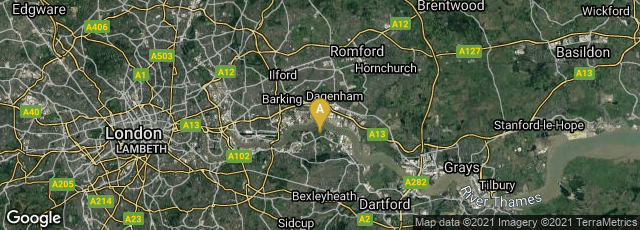Remarkable similarity in the gold stamping on the cloth spines of the Byron set and Babbage's work. Both editions were issued in 1832. Note the price (6s) stamped below the title on the Babbage. Stamping the price into the spine was a Charles Knight innovation that was probably introduced in this binding.


A: London, England, United Kingdom
The London bookbinder Archibald Leighton (1784-1841), who pioneered the use of cloth publisher's bindings for publisher William Pickering, and probably originally introduced cloth in 1825, continued to experiment with cloth as a bookbinding material. In 1832 Leighton developed the first book cloth that could take and retain impressed gilt decoration rapidly and in sufficient quantity to allow for gilt-stamped cloth edition bindings. This historical observation was first made by novelist, publisher, book collector and bibliographer Michael Sadleir in his book entitled The Evolution of Publishers' Binding Styles 1770-1900 (1930) pp. 49-50. Sadleir wrote:
"Previously, although it had been possible to lay down gold on cloth, each book had to be done by hand and with an expenditure of time and trouble which rendered the process useless for an edition of any size. This date of 1832 is fixed in an interesting manner. In that year John Murray began the publication of a 12mo edition of the works of Byron, bound in dark green cloth with title, etc., in a shield on the spine. Vols. 1 and 2 of that edition were originally issued with dark green paper labels, printed with the title and device in gold; Vols. 3 to the end had the same title and device gold-printed actually on the cloth itself. It was between the issue of Vols. 2 and 3 that Archibald Leighton perfected his process for preparing the surface of the cloth and so introduced the gold-blocking of cloth which has been practised ever since."
As far as I could determine in February 2015, Sadleir's observation remained accurate except that the transition from paper label to the gilt label stamped directly on the cloth occurred in the second volume of Murray's set of Byron. The set, entitled The Works of Lord Byron; with his Letters and Journals and his Life by Thomas Moore, Esq., was originally intended, as stated on the titles of vols 1-12, to be complete in 14 volumes, but was extended to 17, including a "very careful and copious index to the whole collection." The volumes were issued at the rate of one per month beginning in January 1832, with publication concluding in 1833. The books were covered in a green, water-silk embossed cloth. The first volume was issued with a green paper label on the spine with the title and a coronet printed in gold. Between the issue of this and the second volume published a month later the technique of gold blocking on cloth became a workable proposition, with the result that the lettering and coronet were stamped directly onto the cloth of the remaining 16 volumes. The historical significance of Murray's edition of Byron in the history of cloth bindings was understood at least as early as 1889 when it was written about in an article on "Technical Bookbinding" published in The Bookbinder 3 (1889) p. 91.
One correlation that I have not seen mentioned previously by scholars is the coincidence of the availability of the Imperial Arming Press in 1832, and the likelihood that its first application for cloth bindings was Murray's set of the works of Byron, followed by Charles Knight's editions of Babbage's Economy of Machinery and Manufactures, three editions of which appeared in 1832 with gold-stamped bindings remarkably similar to those on the Byron set.
Wolf, From Gothic Windows to Peacocks: American Embossed Leather Bindings, 1825-1855 (1990) 12.
Tomlinson & Masters, Bookcloth 1823-1980 (1996) 9.